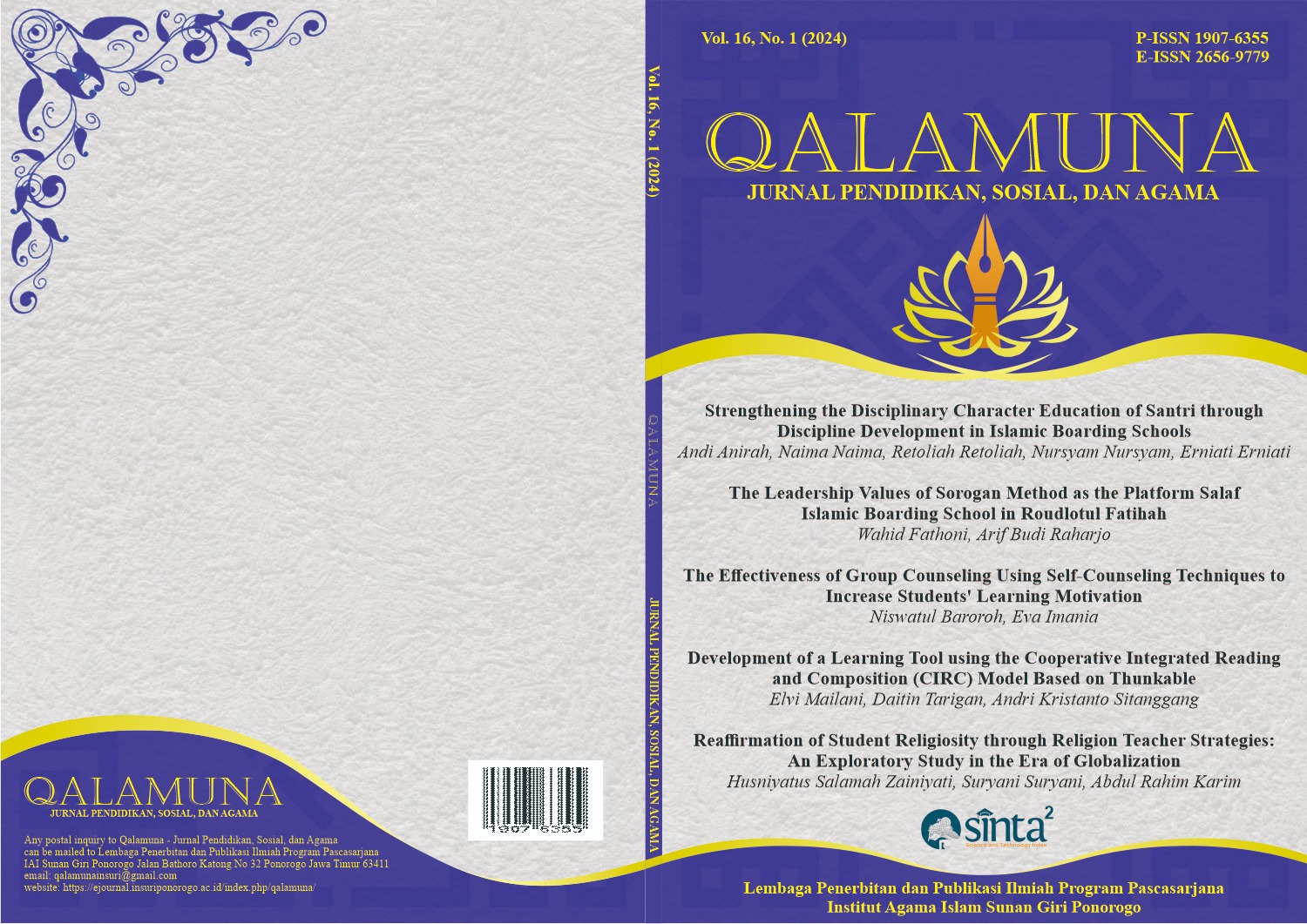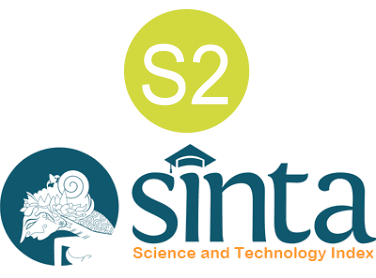School Reputation Management for Institutional Sustainability and Achievement of Excellent Predicate
DOI:
https://doi.org/10.37680/qalamuna.v16i1.5037Keywords:
Management; Reputation; School; ExcellenceAbstract
Reputation is considered a powerful weapon essential in maintaining and preserving an organization's existence. It is also seen as a guarantor for achieving growth amidst turbulence and intense competition among service providers, including in the education sector. School administrators fully recognize the importance of reputation for the existence and growth of educational institutions, but not all of them manage it properly. This study aims to explain the formation of school reputation and analyze the importance of massive implementation of school reputation management. Using a qualitative approach and case study method, data were obtained through interviews, observations, and documentation studies. The research found that all the top, famous, prestigious, and highly reputable high schools in Bandung have not formally integrated reputation as a strategic component, as indicated by the absence of discourse on implementing school reputation management in their environments. So far, reputation management has been natural, not based on strategic plans and tactical measures to counter potential crises that every organization might face. Effective reputation management is crucial for the existence and advancement of leading schools, involving reputational communication strategies, institutional messaging through programs and interactive media, and feedback management to build and maintain the school's reputation.
References
Alsop, R. J. (2004). The 18 Immutable Laws of Corporate Reputation: Creating, Protecting, and Repairing Your Most Valuable Asset. In BusinessSummaries. Wall Street Journal Books.
Anthonissen, P. F. (Ed.). (2008). Crisis communication : practical public relations strategies for reputation management and company survival. Kogan Page.
Arambewela, R., & Hall, J. (2009). An empirical model of international student satisfaction. Asia Pacific Journal of Marketing and Logistics, 21(4), 555–569. https://doi.org/10.1108/13555850910997599
Bhat, P. I. (2019). Idea and Methods of Legal Research. In Idea and Methods of Legal Research. Oxford University Press. https://doi.org/10.1093/oso/9780199493098.001.0001
Bogdan, R. C., & Biklen, S. K. (1982). Qualitative Research for Education: An Introduction to Theory and Methods (Fifth Edit). Pearson Education, Inc.
Carroll, C. E. (Ed.). (2013). The Handbook of Communication and Corporate Reputation. John Wiley & Sons, Inc Wiley-Blackwell.
Chun, R. (2005). Corporate reputation: Meaning and measurement. International Journal of Management Reviews, 7(2), 91–109. https://doi.org/10.1111/j.1468-2370.2005.00109
Deephouse, D. L. (2000). Media reputation as a strategic resource: An integration of mass communication and resource-based theories. Journal of Management, 26(6), 1091–1112. https://doi.org/10.1177/014920630002600602
Delgado-Márquez, B. L., Escudero-Torres, M. Á., & Hurtado-Torres, N. E. (2013). Being highly internationalised strengthens your reputation: An empirical investigation of top higher education institutions. Higher Education, 66(5), 619–633. https://doi.org/10.1007/s10734-013-9626-8
Doorley, J., & Garcia, H. F. (2015). Reputation management: the key to successful public relations and corporate communication (Third Edit). Taylor & Francis.
Esenyel, V. (2020). Corporate reputation as a strategic management tool: Through the lens of employees. International Journal of Management and Sustainability, 9(1), 24–42. https://doi.org/10.18488/journal.11.2020.91.24.42
Fombrun, C. J. (1996). Reputation: Realizing Value from the Corporate Image. Harvard Business School Press.
Fombrun, C. J. (2012). The Building Blocks of Corporate Reputation: Definitions, Antecedents, Consequences. In M. L. Barnett & T. G. Pollock (Eds.), The Oxford Handbook of Corporate Reputation (First Edit, pp. 94–113). Oxford University Press. https://doi.org/10.1093/oxfordhb/9780199596706.013.0005
Griffin, A. (2008). New strategies for reputation management : gaining control of issues, crises, and corporate social responsibility. Kogan Page Limited.
Handoko, T. H. (2003). Manajemen (2nd ed.). BPFE.
Hasanusi, F. S. (2019). Hubungan Antara Identitas Dengan Reputasi Sekolah SMA Negeri 10 Samarinda Kalimantan Timur. Jurnal Ilmiah Wahana Pendidikan, 05(1), 29–40.
Hilgers, M. G., Flachsbart, B. B., & Elrod, C. C. (2012). Collaborative international education: Reaching across borders. Multicultural Education and Technology Journal, 6(1), 45–56. https://doi.org/10.1108/17504971211216319
Järvinen, R., & Suomi, K. (2011). Reputation attributes in retailing services: Managerial perspective. Managing Service Quality, 21(4), 410–423. https://doi.org/10.1108/09604521111146270
Karak, T. (2008). Reputation management in educational organizations: Suggestion of a new model. Academic Leadership: The Online Journal, 6(1), Article 17. https://doi.org/10.58809/tegg2310
Kothari, C. R. (2004). Research Methodology: Methods and Techniques ((2nd revis). New Age International (P) Limited, Publishers.
Ma, Q. A., & Osiyevskyy, O. (2017). Maximizing the strategic value of corporate reputation: a business model perspective. Strategy and Leadership, 45(4), 24–32. https://doi.org/10.1108/SL-05-2017-0043
Marauleng, Risnawati, & Nisa, U. (2021). Strategi Humas dalam Upaya Menjaga Reputasi Sekolah di Mts Al-Hidayah Bakke. Jurnal Mappesona, 4(2), 101–106. https://doi.org/10.30863/mappesona.v4i2.2488
Mateus, M. A., & Acosta, F. J. (2022). Reputation in Higher Education: A Systematic Review. Frontiers in Education, 7(June), 1–19. https://doi.org/10.3389/feduc.2022.925117
Miles, M. B., Huberman, A. M., & Saldaña, J. (2014). Qualitative Data Analysis, A Methods Sourcebook (Third Edit). SAGE Publications, Inc.
Nurihsan, J., & Rachmawati, Y. (2022). ANALYSIS OF FACTORS THAT INFLUENCE STUDENTS ’ ENJOYABLE LEARNING IN CLASS : A LITERATURE REVIEW. 14(1), 513–528. https://doi.org/10.37680/qalamuna.v14i1.4360
Peshev, N. (2020). Reputation as an intangible asset. 9(1996), 80–87. https://doi.org/https://doi.org/10.36997/IJUSV-ESS/2020.9.1.80
Rashid, S., & Mustafa, H. (2021). Antecedents of corporate reputation with employees in higher education institutions: a systematic review. International Journal of Educational Management, 35(1), 297–309. https://doi.org/10.1108/IJEM-06-2020-0310
Redman, L. V., & Mory, A. V. H. (1933). The Romance of Research. Nature, 133, 595–596. https://doi.org/https://doi.org/10.1038/133595b0
Reputationscience. (2021). Reputation Management for Schools: Why It Matters. https://www.reputationsciences.com/reputation-management-for-schools-why-it-matters/
Rifa’I, M., & Hosen, M. (2023). Strategi Humas dalam Meningkatkan Reputasi Sekolah (Studi Kasus di Ma Miftahul Ulum). JIIP - Jurnal Ilmiah Ilmu Pendidikan, 6(6), 5420–5426. https://doi.org/10.54371/jiip.v6i7.2535
Rindova, V. P., Williamson, I. O., Petkova, A. P., & Sever, J. M. (2005). Being good or being known: An empirical examination of the dimensions, antecedents, and consequences of organizational reputation. Academy of Management Journal, 48(6), 1033–1049. https://doi.org/10.5465/AMJ.2005.19573108
Roberts, P. W., & Dowling, G. R. (2002). Corporate reputation and sustained superior financial performance. Strategic Management Journal, 23(12), 1077–1093. https://doi.org/10.1002/smj.274
Romiani, Y., Ghoraishi Khorasgani, M. S., & Norollahee, S. (2024). Higher education managers’ perception of university reputation components: a model for Middle Eastern countries. International Journal of Educational Management, 38(2), 525–548. https://doi.org/10.1108/IJEM-09-2023-0433
Salvador, J. L. G., & Díaz, G. M. (2024). Enhancing Business Decision Making through a New Corporate Reputation Measurement Model: Practical Application in a Supplier Selection Process. Sustainability (Switzerland), 16(2). https://doi.org/10.3390/su16020523
Schultz, H. B., & Werner, A. (2005). Reputation management. 1–15.
Steiner, L., Sundström, A. C., & Sammalisto, K. (2013). An analytical model for university identity and reputation strategy work. Higher Education, 65(4), 401–415. https://doi.org/10.1007/s10734-012-9552-1
Sugiyono. (2016). Metode penelitian pendidikan : pendekatan kuantitatif, kualitatif, dan R&D. Alfabeta.
Terry, G. R. (1977). Principles of Management. Richard D. Irwin Homewood.
Wahyudi, A., Mantik, A., Windayanti, W., Muhtarom, M., & Kusuma, N. (2023). School-Based Management in Efforts to Develop Student Life Skills in Community. QALAMUNA: Jurnal Pendidikan, Sosial, Dan Agama, 15(2), 533–542. https://doi.org/10.37680/qalamuna.v15i2.2701
Warta, W. (2017). Manajemen Reputasi (Iqbal Triadi Nugraha (Ed.)). Simbiosa Rekatama Media.
Downloads
Published
How to Cite
Issue
Section
License
Authors who submit manuscript retain its copyright and grant publisher right of first publication licensed under a Creative Commons Attribution-ShareAlike 4.0 International License (CC BY-SA 4.0) that allows others to access (search, read, download, and cite), share (copy and redistribute the material in any medium or format) and adapt (remix, transform, and build upon any material) the work for any lawful purpose, even commercially with an acknowledgement of the work's authorship and initial publication in Qalamuna: Jurnal Pendidikan, Sosial, dan Agama.












